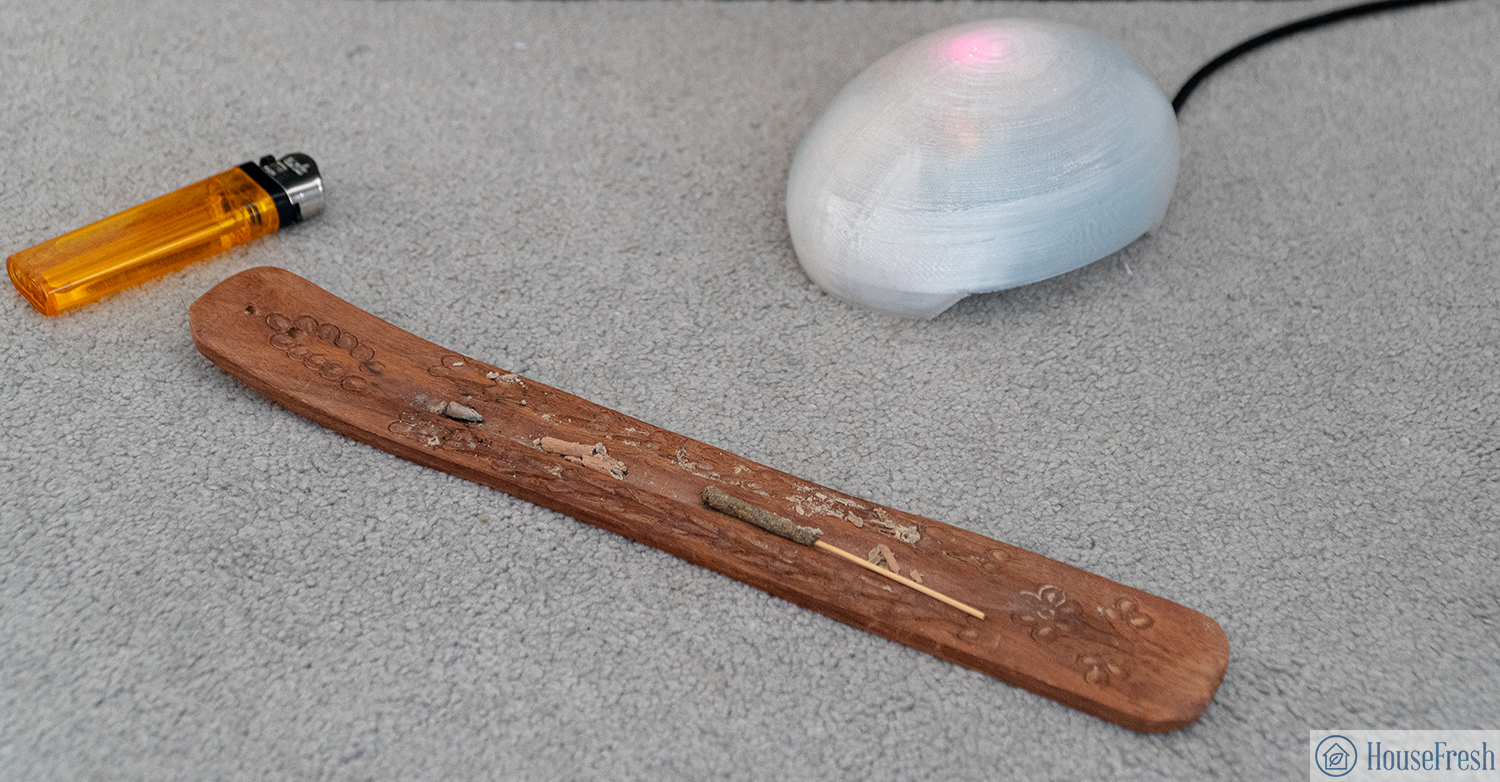Burning incense is an age-old tradition, rooted in many different faiths, cultures, and traditional medicines. Its pleasing and calming aroma has given it widespread appeal and today, it is found in homes all around the world to help people unwind and cover up the unpleasant smells of daily life.
But can the fumes it releases pose a danger to your health? We’ve investigated the benefits and drawbacks burning incense provides to find out.
Why do people burn incense?

While the world whirs by, many of us are seeking to slow down and take time for ourselves. To do so, more and more people are turning to the likes of meditation, yoga, and mindfulness to achieve a more calming lifestyle. Amongst these practices, burning incense is very common as it’s suggested incense helps to create a less stressful environment whilst bringing about a certain presence of mind, required for meditative states.
These more modern uses are perhaps inherited from the ceremonial burning of incense used in many religions. From Buddhism to Taoism and even Christianity, incense plays a pivotal role in religious rituals and worship, cementing its use as a spiritualistic medium.
For people like you and me, we find that incense is commonly used in a domestic setting to help cover up unpleasant odors. Much like scented candles or essential oil diffusers, incense can spread a pleasing aroma throughout the home to help mask a multitude of smelly sins, whether from cooking, pets, or body odors.
Is incense smoke bad for you?
Incense is made from a combination of aromatic materials such as sage, resins, wood, herbs, and spices. However, over time, synthetic materials such as fragrance enhancers and binding agents have been added to increase its effects and bring down production costs.
As we know, when these materials are burnt, smoke will be produced, and with smoke comes the risk of health complications. Studies have now shown that when we burn incense, large quantities of particulate matter are emitted into the air including a wide range of volatile organic compounds (VOCs), which can be particularly harmful to our health.
One study, in particular, found that some incense released high quantities of polycyclic aromatic hydrocarbons, which are carcinogenic. Alongside other toxins and irritants such as benzene and carbon monoxide, the dangers of incense smoke should not be taken lightly. With the EPA stating prolonged exposure could result in:
- Cancer
- Asthma
- Contact dermatitis
Although this may make for concerning reading, it must be said that dosage plays a key factor here. Most of the studies state inhaling particulate matter may increase the risk of health complications rather than be a direct cause of illness or disease. This means reducing your exposure to incense and practicing certain safety precautions whilst burning will help to greatly reduce any risk.
How HouseFresh uses incense to test the efficacy of air purifiers

When we test air purifiers for our reviews, we create an environment full of airborne contaminants to see how fast the unit can remove them from the room. To create these contaminants, we light an incense stick in our testing room to fill it full of smoke.
We then use a Purple Air Indoor sensor, that includes a PMS1003 laser particle counter, to continually track PM1, PM2.5, and PM10 so we can see quickly these levels of pollution change. This device then shows us the findings on a graph.
As you can see from the graph, we lit the incense at 10:29 and let it fill the room with smoke. The incense makes quick work at contaminating the air in less than half an hour, raising all three PM levels drastically before switching on our IQAir Healthpro Plus.
How to burn incense safely

By reducing exposure, we initially mean limiting the amount of incense you burn. It was recently discovered that the air quality around certain temples has reached toxic levels during religious festivals due to the excessive volume that is being burnt. Limiting your personal use of incense and avoiding being in places that may burn a lot of incense for prolonged periods should be your first port of call.
Secondly, it is important to consider the type of incense that you burn. With a plethora of sticks, cones, powders, and coils on the market, it’s worthwhile taking your time to research and look for those which utilize organic ingredients and that will burn for shorter time periods (most vary between 45 and 90 minutes).
The final and perhaps most important precaution you should implement is increasing ventilation. Opening a window close to the source is a good first step, however, if you wish to introduce extra measures (or if opening a window isn’t always possible), then running an air purifier simultaneously will dramatically reduce your exposure. Ensure your air purifier utilizes Activated Carbon alongside a HEPA filter. These are proven to adsorb VOCs such as incense smoke, capturing any harmful particulate matter as the air passes through.






